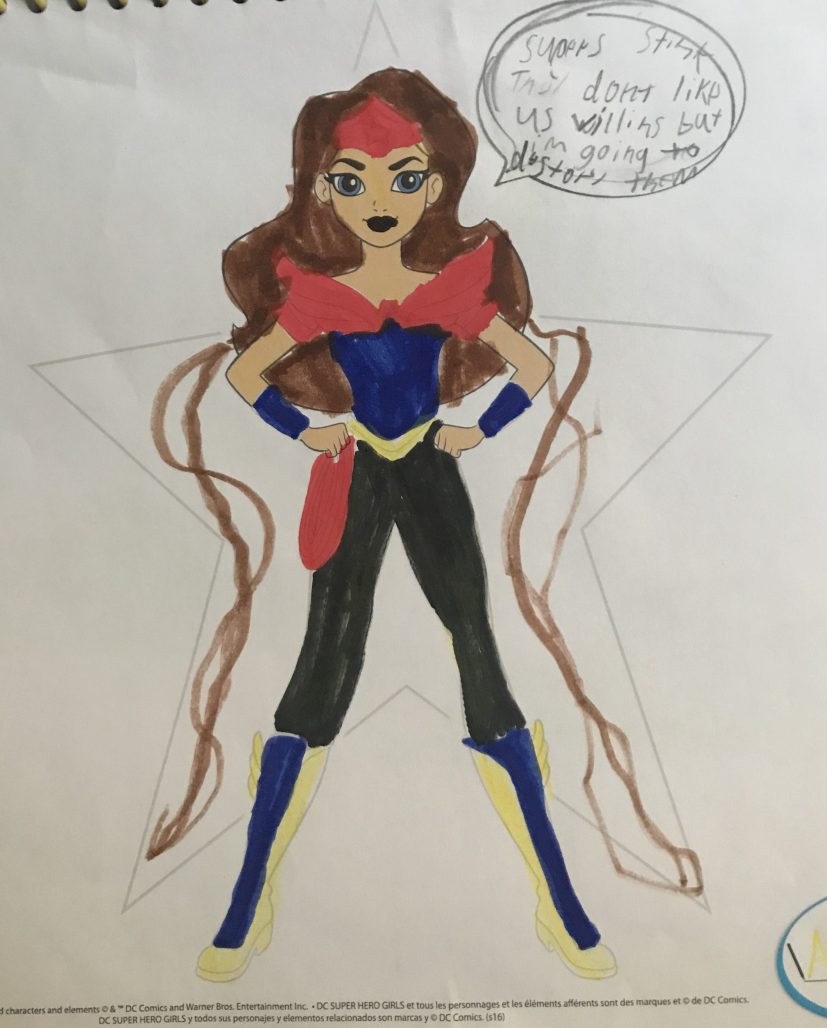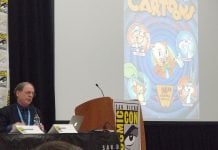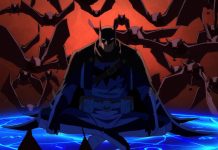Late Saturday afternoon, I nestled myself into a chair inside a crowded room at the Anaheim Convention Center as kids, teens and parents filled the room. A young girl next to me played with a Hawkgirl doll. She tried standing the doll up for the panelists to see, realized she wasn’t in an optimal seat and then quickly read to the other side of the room so she could be directly in front of the panel.
Moderator and Editor of the DC Super Hero Girls graphic novels and comics Marie Javins kicked the panel off by asking each panelist to describe what it is like to work on DC Super Hero Girls. Joining Javins was writer Shea Fontana, artist Yancey Labot, colorist Monica Kubina, and the voice of Supergirl, Anais Fairweather.
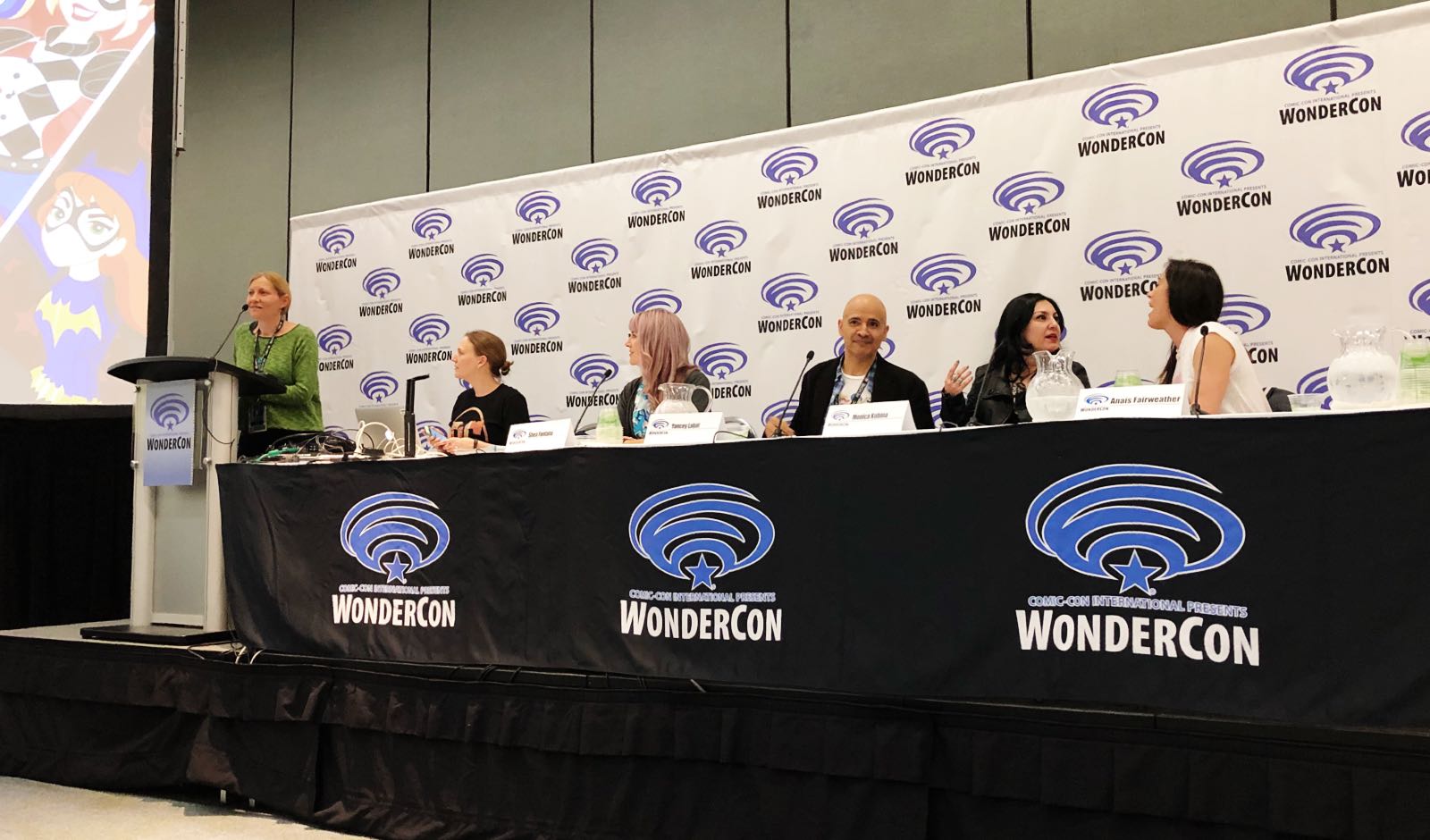
Yancey Labot said what he loves about working on DC Super Hero Girls is that he gets to draw characters his daughters love. “They are my number one critics, but they are also my number one fans. It’s been such a blast.”
Colorist Monica Kubina comes to the series with a different perspective, as the mother of two boys she says something she enjoys is being able to share this show with her two sons. “It teaches them equality without being too preachy about it.”
Viewing the series through the lens of youth is something the panelists often reflected upon. As the voice of Supergirl, Fairweather said it’s almost emotional for her to get to see her niece fly around the room and feel her own power. That’s a sentiment I can relate to.
The Joys of Teamwork
My niece is a giant DC Super Hero Girls fan and will animatedly talk to you about her favorite characters Katana and Star Sapphire for as long as humanly possible. She loves to make up her own adventures for them and act them out with her dolls. I asked her what she liked most about the series and she said, “I like that the girls work together to save people and help the planet.”
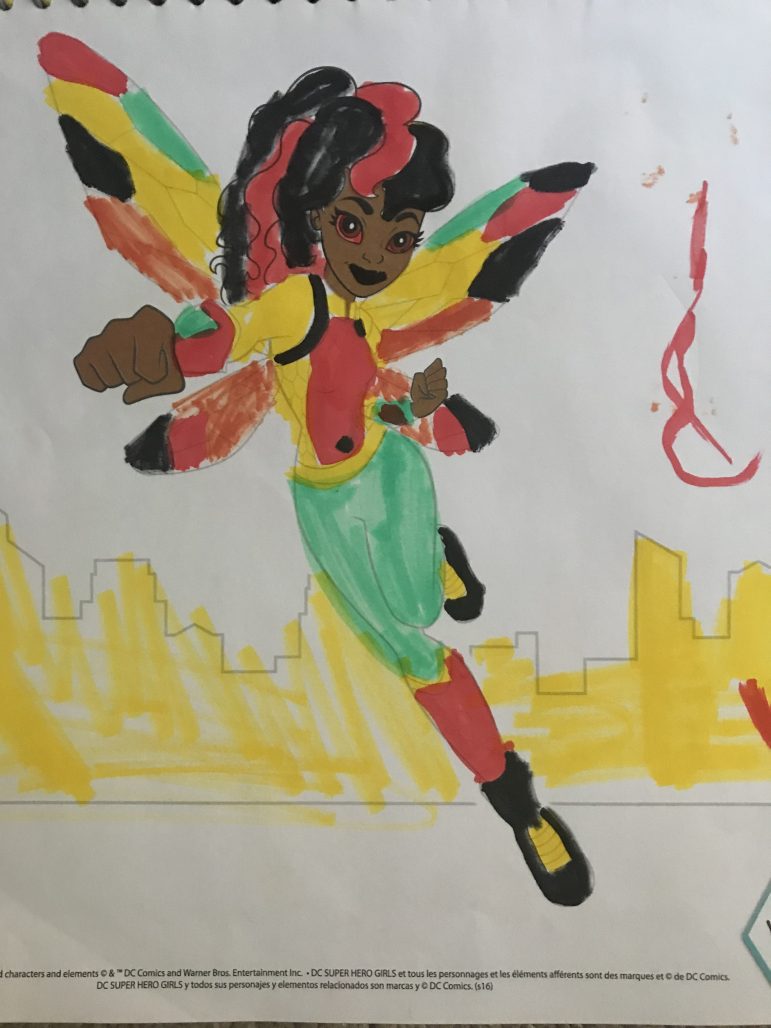
It’s not exactly a radical idea to have cartoons depicting characters who work together. What makes DC Super Hero Girls different is that this is a group of young female teens working together to overcome all kinds of conflict. There’s internal conflict, interpersonal conflict, and the conflict that comes from facing down villains. Javins touched on this theme when she asked the panelists why they felt it’s important that girls and boys (especially boys) see girls as super heroes and main protagonists.
Fairweather jumped at the chance to respond, “It’s so important, I think, for young boys to see young women and girls as powerful because they are going to carry that with them the rest of their lives. To me it’s just so overdue.”
Kubina added, “It’s important to have boys on our side. You need to start when they are young, it’s much easier to teach a young boy equality than it is teach an older person. My boys see Wonder Woman just as powerful as they see Superman or Batman. You know if you look back at the animation I had as a kid, that’s just not how we saw it, it was very belittling.”
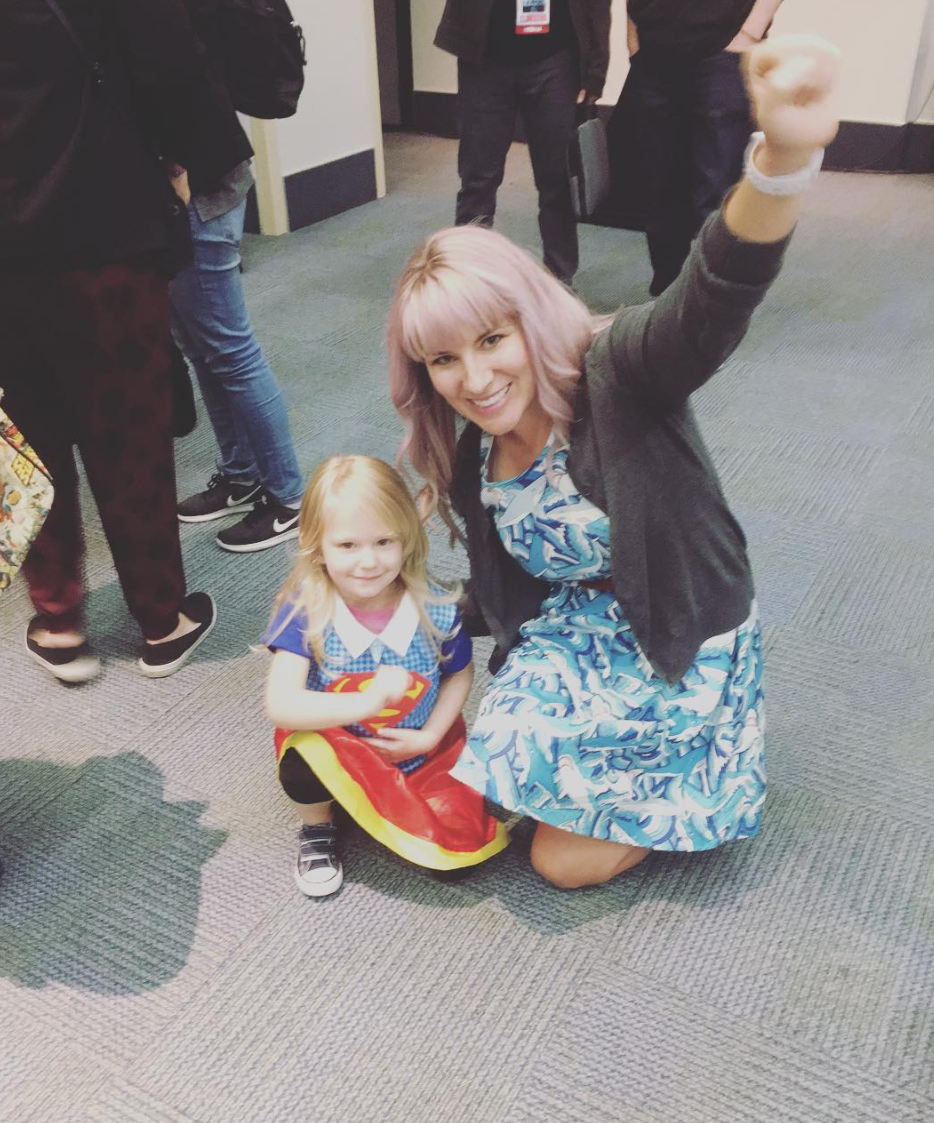
As the writer for DC Super Hero Girls, Shea Fontana says she relies on her own past struggles, feelings and emotions to help spurn storylines for the characters. Fontana discussed her personal experiences with anxiety and control and how she brings those emotional experiences into the Super Hero Girls universe. Fontana talked about how she came up with the idea for the upcoming graphic novel Out of the Bottle, due out in August.
“With something like Out of the Bottle, which is a story that at the heart of it, is about how we bottle up our emotions and how we can use our creative expressions to take those emotions out and really work through them either through creating comic books, writing, or with art. This [story] is about June Moon, she’s really bottled up her emotions because she doesn’t want to lose control and become The Enchantress. It’s about her figuring out, with a little bit of help from Harley who is our resident local psychiatrist, she’s really figuring out how to work through her emotions. That was something, for me, that as an adult I really had to figure out and it’s something I wish I had known as a kid.”
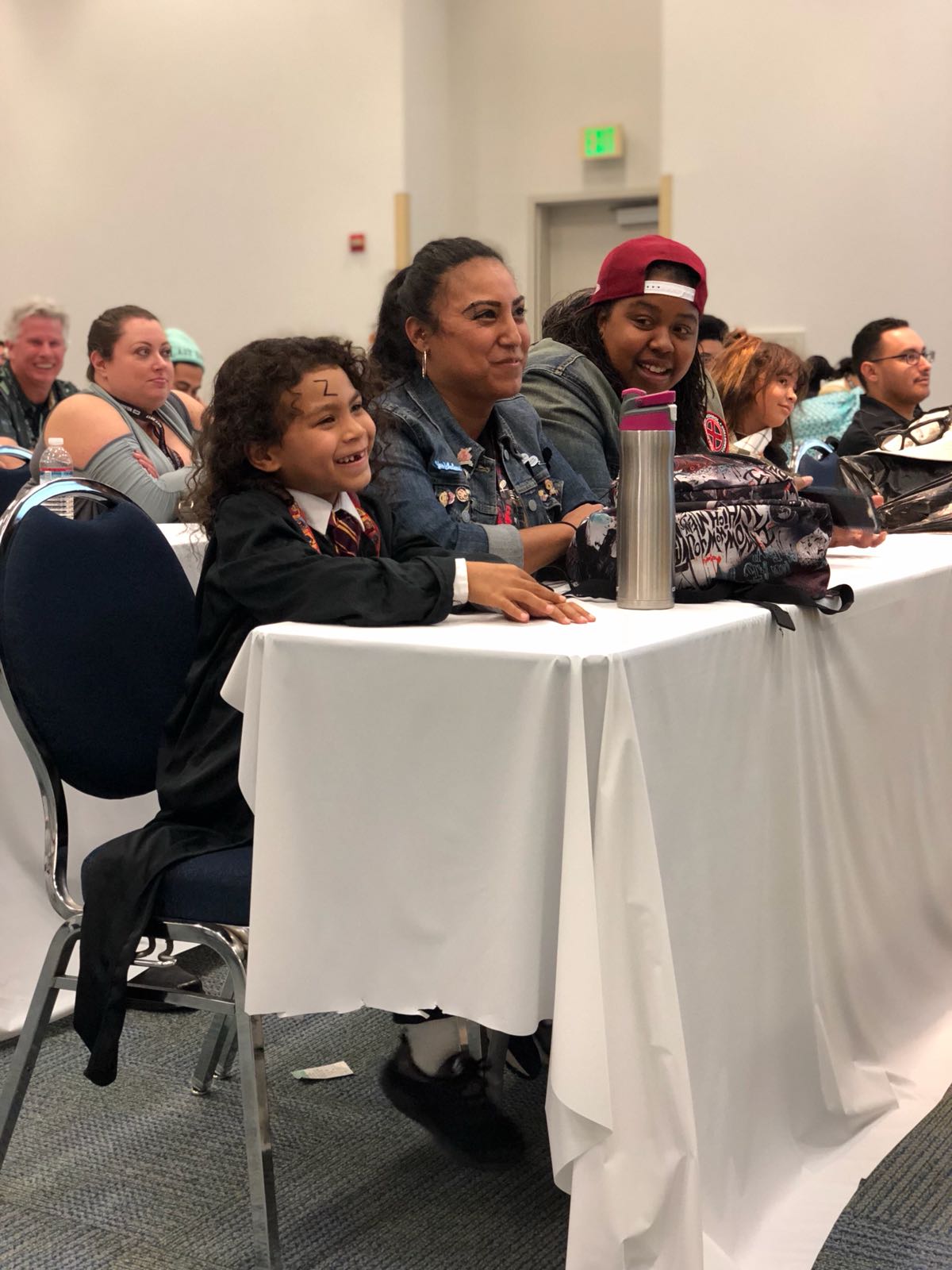
To show young girls with insecurities, unsure of themselves and their own power or how to use it, is a common theme in the series. We’ve seen this most recently with the introduction of the new Green Lantern, Jessica Cruz. Cruz isn’t convinced that she’s the right person for the job, she doesn’t yet have the self-confidence to embrace her role. She compares herself to Batgirl who seems to have it all figured out. These are not unlike the challenges many of us face. To see them reflected in a way that is digestible for both young and the young at heart, is part of what has made DC Super Hero Girls such a hit.
Anais Fairweather briefly touched on the story arc of Supergirl and the journey she’s been on. When Supergirl first arrives at Super Hero High she’s filled with self-doubt, constantly apologizing for her mistakes and really embarrassed by them. Over the last couple years she’s been able to empower herself through the help of her friends. It’s a message, Fairweather, says she takes to heart working in the TV and film industry, “You really need good people around you.”
Something that wasn’t discussed in the panel but which my niece brought up to me, was what the characters in DC Super Hero Girls get to wear. In many cartoons for young girls the focus tends to be on appearance. There are entire episodes dedicated towards girls fighting with themselves or one another over which outfit to wear. For the main characters in Super Hero Girls the focus tends to be on how to overcome challenges through building relationships to themselves and one another. That the characters get to wear Super Hero outfits is part of how they realize their own power.
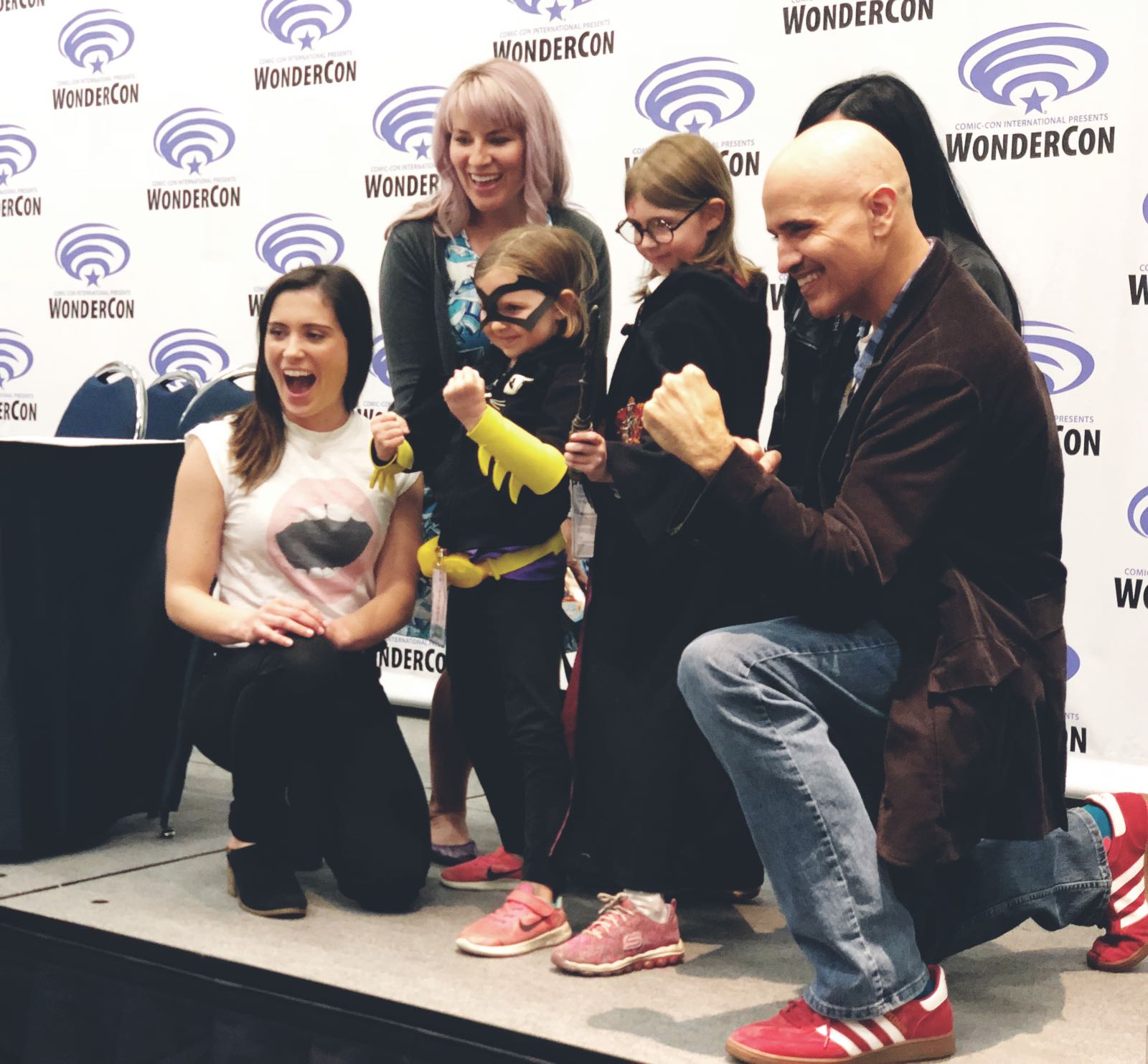
It’s one thing for me to see my niece excited about a TV show but I was taken aback by how powerful it is to see young girls dressed as their favorite character taking on power poses. To see the joy of a child as they watch a clip featuring a character who looks like them, or sounds like them was deeply moving.
The emotions, the insecurities of DC Super Hero Girls feel authentic, they aren’t contrived or an afterthought. They are a well integrated component of each of the characters storylines and arcs. This is perhaps why the series has found such popularity. Each of us has experienced loneliness, lack of control, anger and weakness. That these characters get to show emotional fragility and conflict, that they get to show imperfection, is a rare quality not only among cartoons but throughout our media landscape. Getting the chance to see characters building their emotional intelligence, acknowledging that it is okay to be vulnerable and rely on others, is a powerful message at any age.


